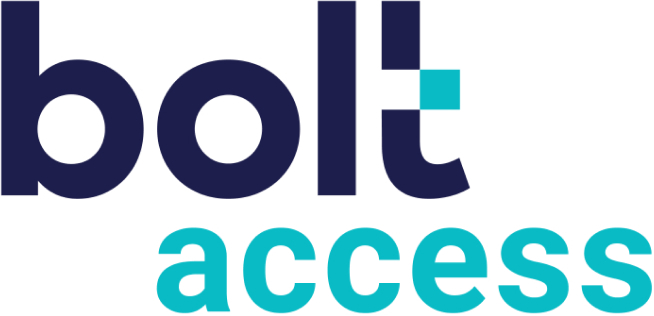
"
Catering to young digital-native customers is a must for most independent agents. After all, this demographic now accounts for the majority of insurance customers.
In 2019 millennials made up 31.5 percent of the global population, and Generation Z comprised 32 percent, according to Lee J Miller and Wei Lu at Bloomberg.
And as more and more agents are learning, the insurance buying journey of these young customers is seldom simple. Instead, it usually comes with several twists and turns — something which agents need to account for and base their sales and marketing around.
Multiple Touchpoints is the New Norm
In the past, insurance customers typically had a straightforward buying journey with a minimal number of steps. They found an independent agent in the phone book or were referred by a friend or family member. They probably wouldn’t do all that much research on their own, and they would get the bulk of their information from that independent agent when deciding which policies to purchase. This was usually done over the phone or in person.
As technology has evolved, however, things have changed dramatically.
“Consumers have more choice than ever before,” writes the team at marketing research platform Think with Google. “They research and shop across multiple devices, multiple touch points, around the clock — both online and off.”
In a comprehensive study of 4,200 consumers, researchers analyzed a wide variety of digital behavior and found that no two customer journeys are exactly alike. Simply buying a piece of clothing comes with a lot of digital shopping complexity. You can imagine what it’s like when buying an insurance policy.
Insurance editor at Policygenius Pat Howard explains that the average cost of a homeowners policy is about $1,200 per year, so it makes sense that most customers will perform a lot of research before committing to a purchase. This research tends to include multiple touchpoints.
And just to be clear, “a touchpoint is any encounter where prospective buyers engage a business or sales rep to exchange information, address questions, or handle a transaction,” writes Megan Ranger at customer relationship management platform Nimble. “Think of touchpoints as your prospective buyers’ every point of contact from the time they first become a marketing qualified lead (MQL) to the close of sale.”
Touchpoints can span a variety of mediums, notes Lorna Keane at market research company GlobalWebIndex, including websites, online advertising, email, social media and video.
An Example of a Prospect’s Journey
To better understand the process, here’s an example of what a prospect’s path may look before they make their final decision. First, they perform a search for the type of insurance coverage they’re looking for on their smartphone. It could be something like “what to look for in homeowners insurance.” They gather key information and digest their findings.
Then they search “homeowners insurance near me” and look at the websites of a handful of different agencies in their area.
They narrow it down and check out the Facebook pages of the two or three agencies they’re most interested in on their laptop. After that, they email those agencies requesting information before finally deciding which one to use for their purchase of a homeowners policy.
This example demonstrates the sequence of steps that can take place and also shows that customers often use different devices. The average digital consumer uses three different internet-enabled devices at the moment, writes Brent Heslop at MarTech Advisor, and that number will likely increase in the near future. This means your marketing and content will have to be available across devices and formats.
Agents Need to Align Their Strategy Accordingly
Multiple touchpoints is a major trend that modern agents need to account for. In fact, EY Global, a multidisciplinary professional services organization, says four out of five customers are willing to use digital channels. And this is especially true when it comes to reaching younger generations who are often digitally savvy.
We’re at a point where you can make the assumption that millennial and Gen Z consumers are going to rely on meandering digital journeys before they arrive at their insurer of choice. So you need to come up with a viable game plan that positions your agency to succeed in this current climate, which brings us to our next point.
How to Lay the Foundation for a Multi-Touchpoint Journey
Now that we’ve established that multiple touchpoints are the norm and you have a better understanding of how young digital customers choose an insurance agent, let’s discuss some strategies for adapting to this trend.
Here’s how to develop a framework that works for your business.
Retrace Your Customers’ Steps
First, you need to figure out the most common touchpoints your customers are using to find you. This will provide you with a bird’s eye view of what their buying journey looks like, so you can ultimately refine it and rinse and repeat using the techniques that work best.
Admittedly, this can feel a little overwhelming because there isn’t a simple path for every company, explains customer data platform Arm Treasure Data. However, if you currently use an analytics or CRM platform, you should be able to get some basic information from that.
For instance, Google Analytics will identify the top traffic sources by channel, such as organic search, social media and website referrals, explains Nate Shivar, a digital marketing consultant. This is a good starting point and should give you an overview of how the majority of your leads are finding you.
You may notice, for example, that Facebook is bringing in an exceptionally high volume of leads. That means it’s a major touchpoint, and should be well worth your time optimizing your Facebook page and building your audience.
If you’re new to Google Analytics, there’s a great five-step tutorial from Tianna Haas at WebFX that you can use to get up to speed quickly.
Make Your Website Mobile-Friendly
As mentioned, it’s common for insurance shoppers to use multiple devices, with smartphones in particular being frequently used. It’s essential then that your website is mobile-friendly and accommodates the needs of users.
A mobile-friendly website should be easy to read without squinting, simple to navigate with buttons and links big enough to be tapped with a finger, and visually appealing, writes Betsy McLeod at online marketing company Blue Corona.
To learn the basics, check out this guide about 10 simple ways to make your site mobile-friendly by internet marketer Winnie Wong.
Invest in SEO
Nearly all customers start their shopping with a search. In fact, Ryan Shelley, founder of digital marketing agency Shelley Media, writes that more than nine out of 10 (93 percent) digital experiences start with a search engine. Without a solid presence on major search engines like Google, it’s going to be an uphill battle reaching young digital customers. That’s why it’s never been more important to invest in SEO.
“Over 50 percent of traffic around the web entered websites by clicking on them in the organic search results,” explains Sherman Standberry, cofounder of Lyfe Marketing. “That means that websites who have invested in SEO are getting over 50 percent of the total traffic across the Internet. And if they rank on the first page, they are seeing over 90 percent of that traffic.”
There’s a lot that goes into SEO, and it’s a marketing technique that can take years to master. Marketing consultant Ilia Markov says it essentially boils down to three key areas: Optimizing your website for targeted keywords, making your site accessible to users and search engines, and getting other sites to link to your insurance agency’s site. Markov’s guide is a great resource for SEO basics and will walk you through the process step-by-step.
If you’re not comfortable handling this yourself or don’t have the time, you can always hire a professional agency to take care of your SEO for you. Digital strategy consultant Clark Boyd explains how to choose a reputable company, and includes a list of questions to ask.
Provide an Omnichannel Touchpoint Experience
Success in nearly any industry is contingent upon adaptation. And this is certainly true for the insurance industry. In order to reach millennials and Gen Zers, you have to understand how they go about the insurance buying process, which tends to involve multiple touchpoints.
Adjusting your approach and implementing specific strategies as mentioned will put you on the right track and ensure you can continually reel in young digital customers.
Images by: fizkes/©123RF.com, rido/©123RF.com, marctran/©123RF.com
"
Talk to an expert
Contact us
